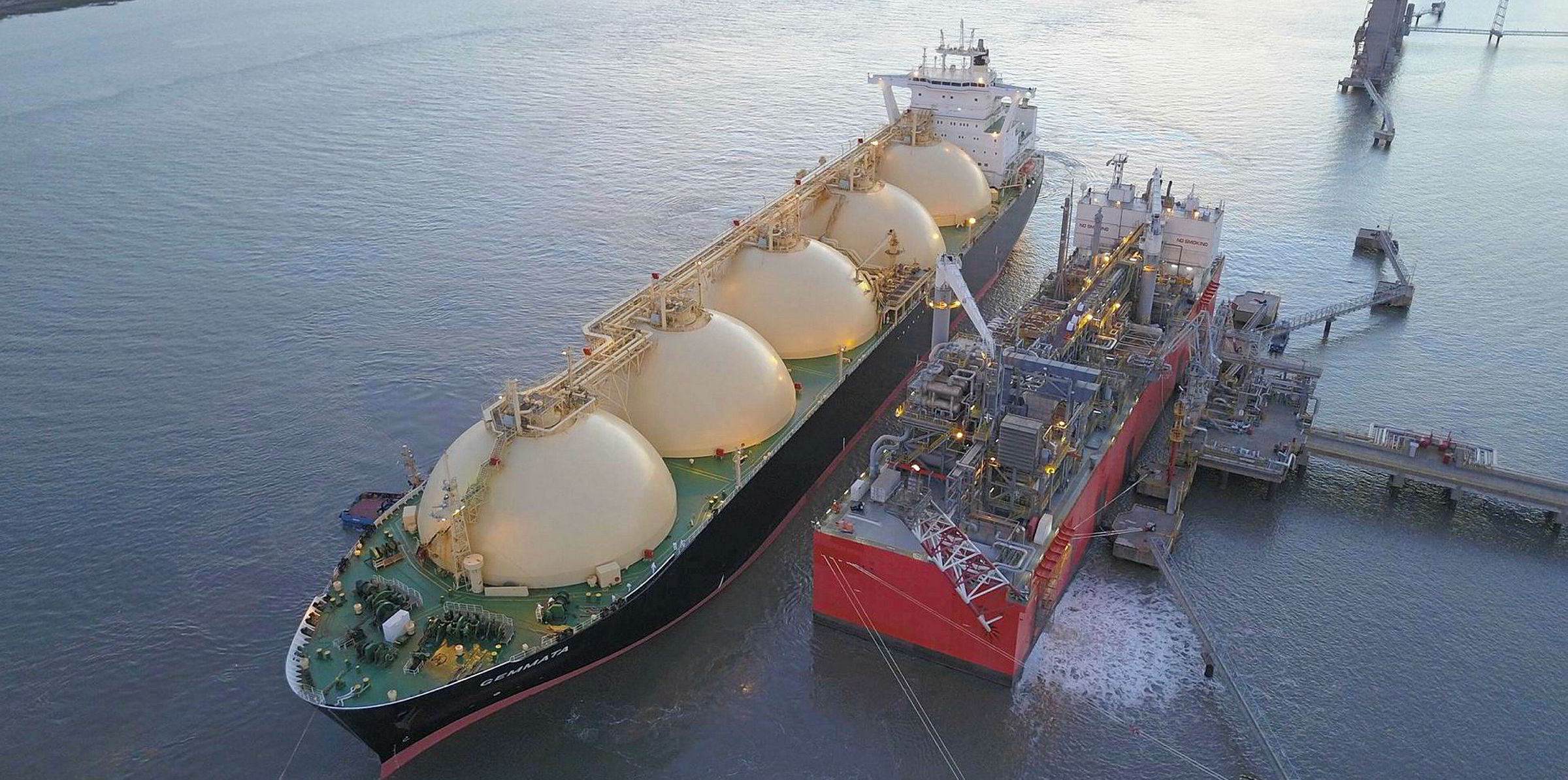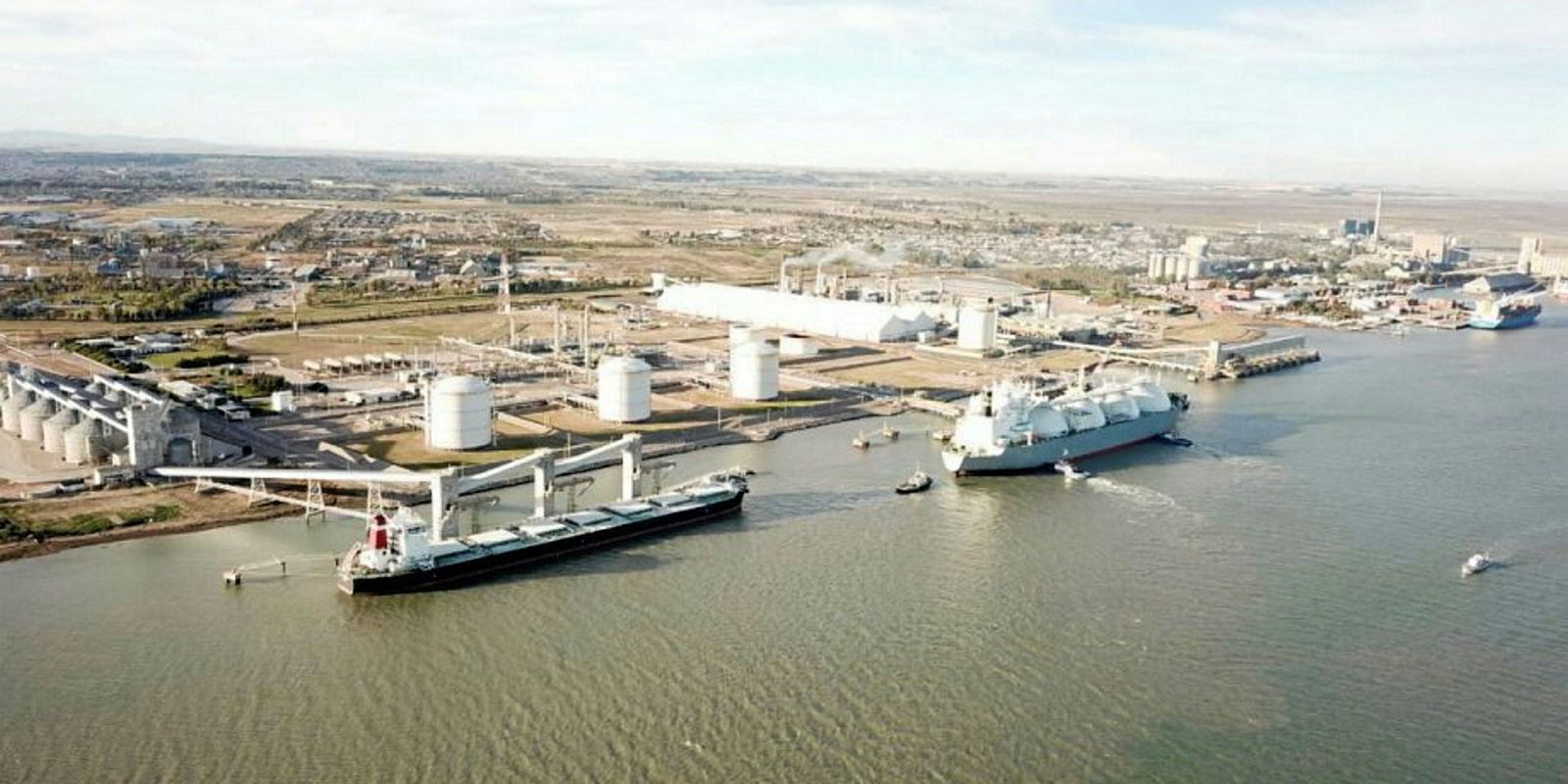A first export cargo from Argentina is due to depart within days as Exmar’s mid-scale barge-based liquefaction unit Tango FLNG gears up production.
By Wednesday, the 0.5 million tonnes per annum capacity floater had already discharged an initial cargo into one tank of a waiting LNG carrier, the 147,895-cbm Fuji LNG (built 2004), which is moored alongside in Bahia Blanca.
A second 15,000-cbm of LNG is due to be loaded after performance testing is completed.
Tango FLNG’s charterer YPF has sold the small cargo parcel to Cheniere Energy. It is unclear, as yet, where the shipment will be discharged.
The departure of this first cargo will see Argentina become the world’s 21st LNG producer.
LNG production capacity: 500,000 tonnes per annum
LNG storage: 16,100 cbm
Storage tanks: Type-C
Draught: 5.4 metres
LOA: 144 metres
Beam: 32 metres
Depth: 20 metres
Liquefaction technology: Black & Veatch Prico SMR
Shipbuilder: Wison Offshore & Marine
Shale reserves
Tango FLNG is being supplied with gas from the country’s Vaca Muerta shale reserves. It is expected to produce up to eight LNG cargoes per year, depending on the size of the offtake vessels.
Chinese-built Tango FLNG was ordered by Belgium’s Exmar. The unit arrived in Argentina on a heavylift vessel in February and berthed at the jetty where an Excelerate floating storage and regasification unit had previously been stationed.
The liquefaction unit, the world’s smallest to date, has been undergoing commissioning in the interim and took on a small amount of LNG for cooldown purposes in April.
Tolling deal
Tango FLNG is fixed to YPF under a 10-year tolling deal that starts in September. But both parties opted to start production from the floater in advance of this to have a ramp-up period.
It looks set to become the world's third floating LNG plant to start exports, just as its significantly larger cousin Shell’s Prelude FLNG, prepares to ship its first cargo off Australia.






